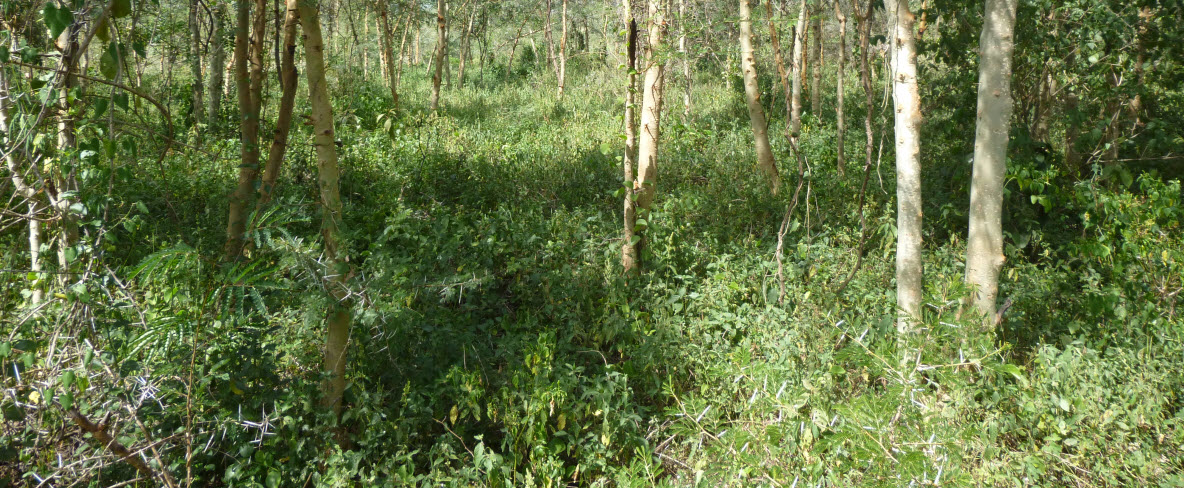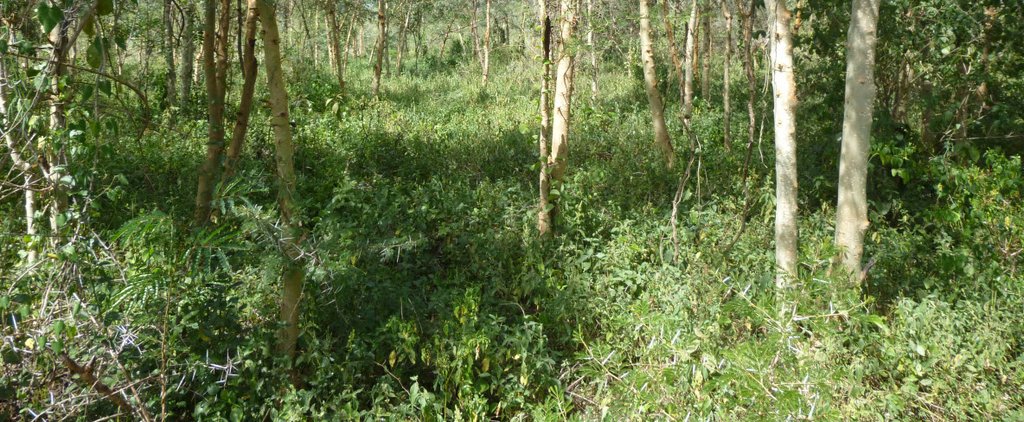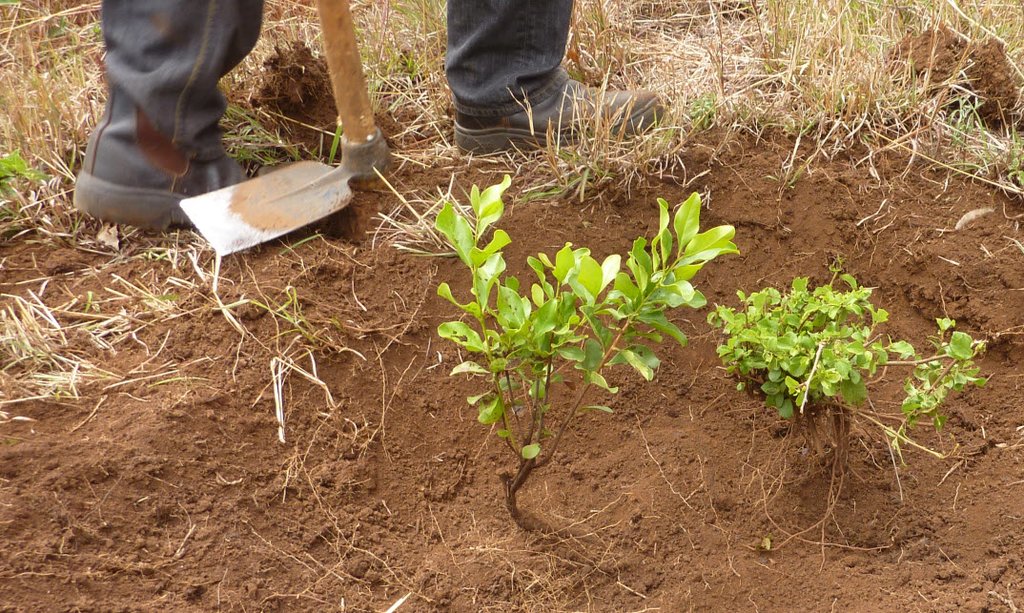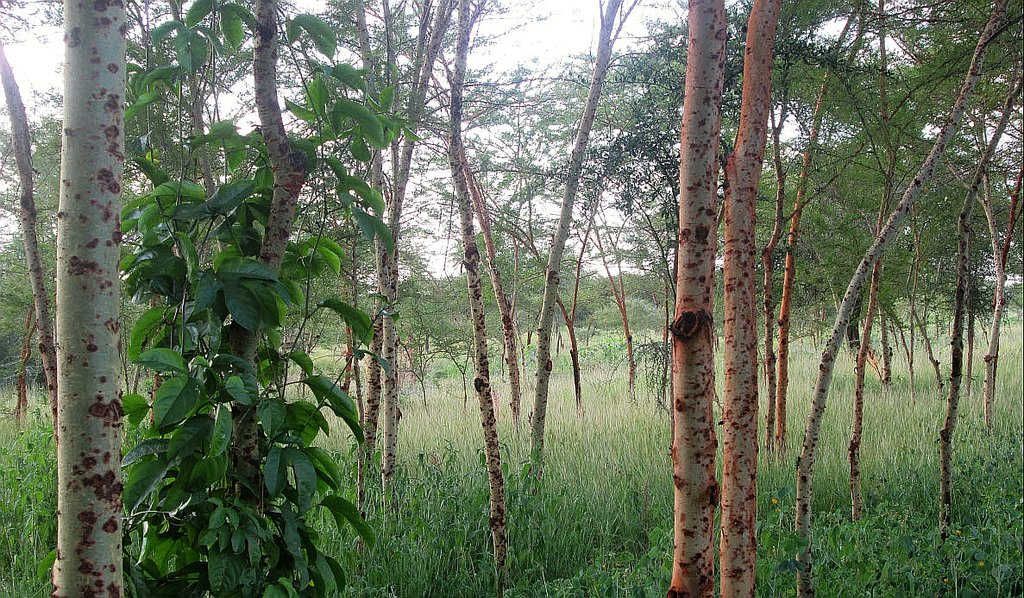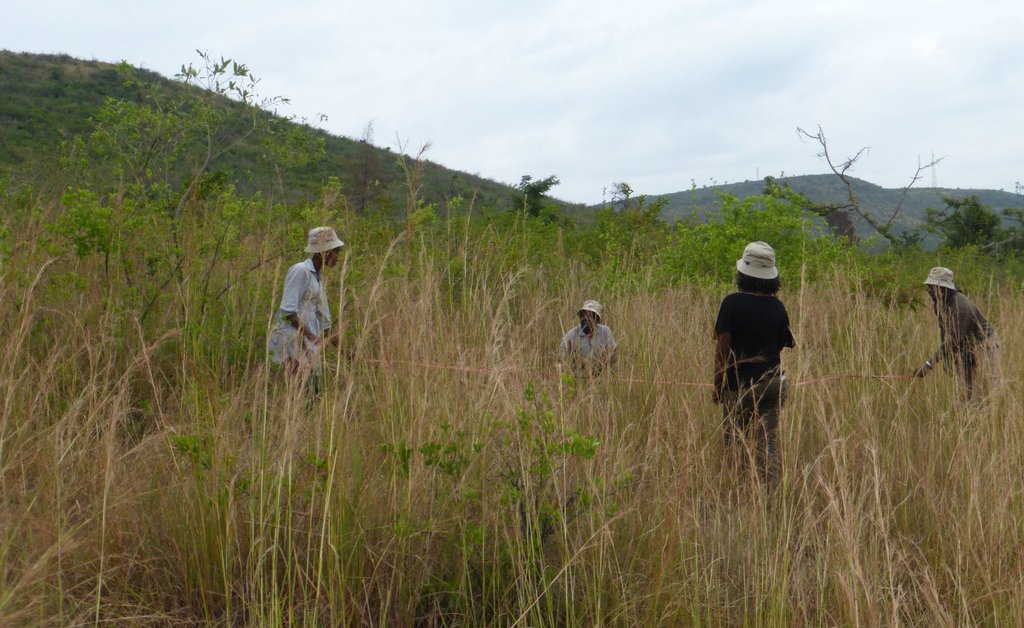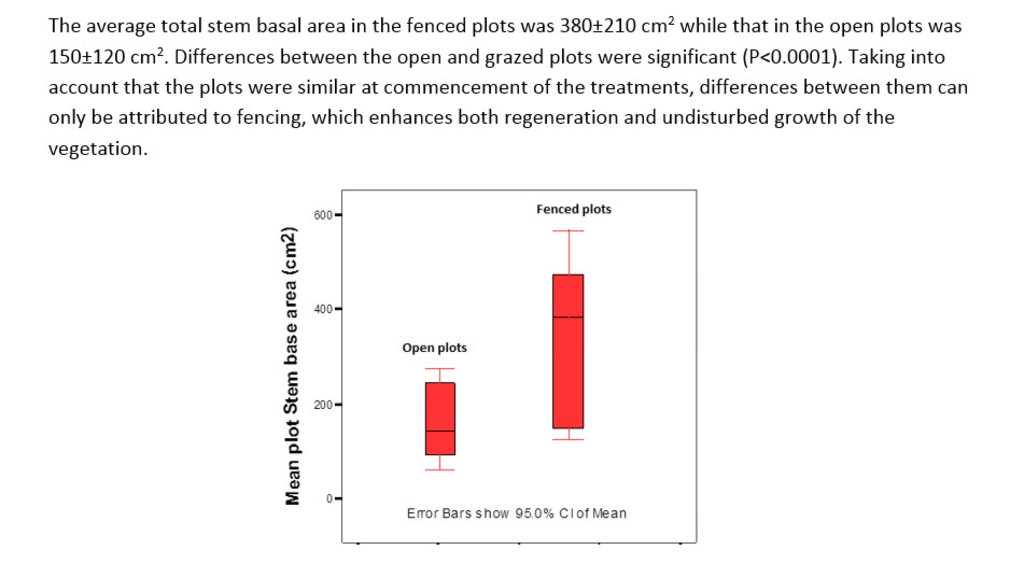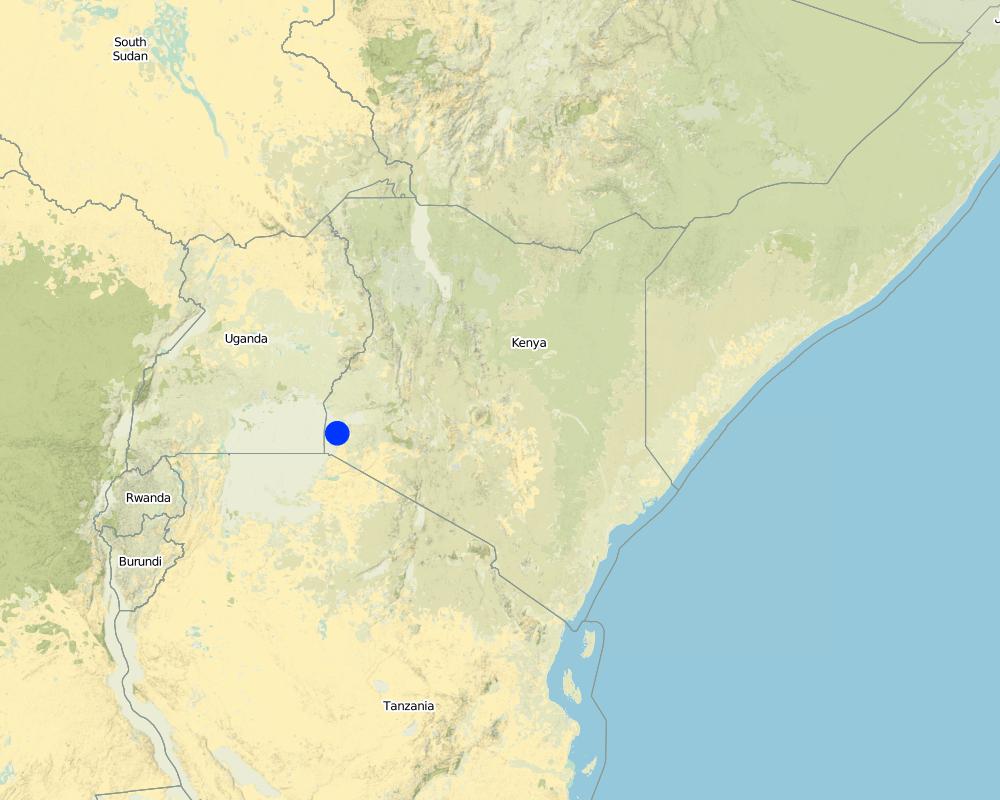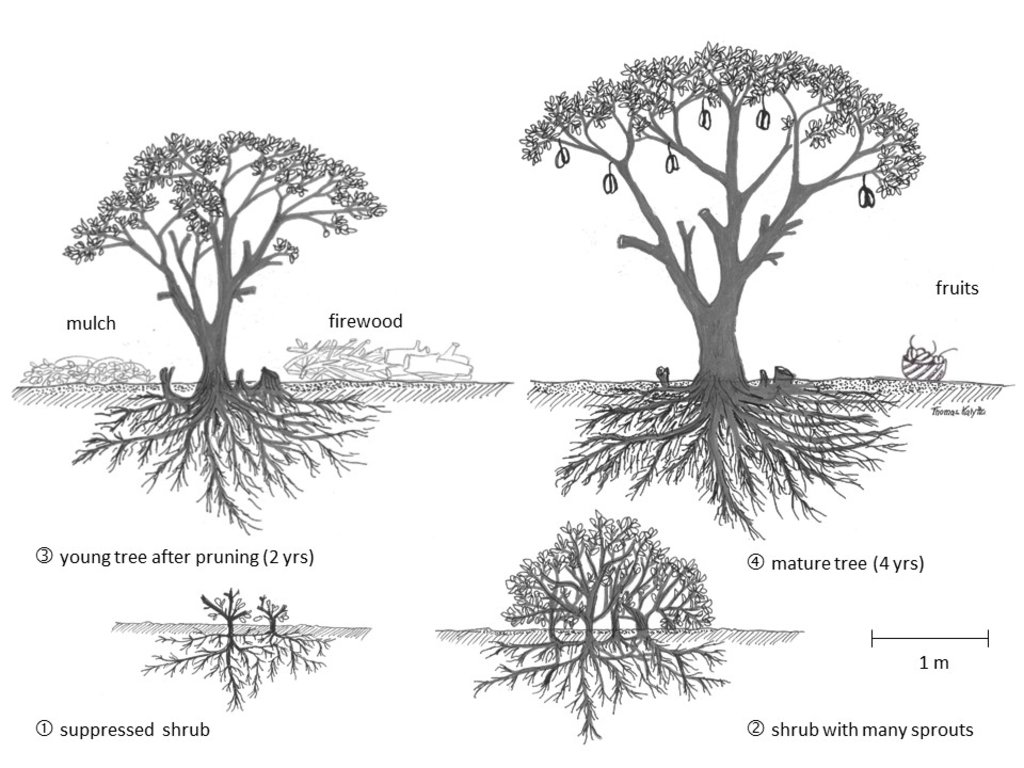Farmer Managed Natural Regeneration (FMNR) [Кения]
- Создание:
- Обновить:
- Составитель: Thomas Kalytta
- Редактор: Irene Ojuok
- Рецензенты: Hanspeter Liniger, Nicole Harari, Alexandra Gavilano, David Streiff, Fabian Ottiger, Mathias Gurtner
FMNR
technologies_507 - Кения
Просмотреть разделы
Развернуть все Свернуть все1. Общая информация
1.2 Контактные данные специалистов и организаций, участвующих в описании и оценке Технологии
Ответственный (-ые) специалист (-ы)
Специалист по УЗП:
Ojuok Irene
World Vision
Кения
Kalytta Thomas
World Vision
землепользователь:
Sijenyi Onyiego William
Obanda Environmental project
Кения
Название проекта, содействовавшего документированию/оценке Технологии (если применимо)
Book project: where people and their land are safer - A Compendium of Good Practices in Disaster Risk Reduction (DRR) (where people and their land are safer)Название организации (-ий), содействовавших документированию/оценке Технологии (если применимо)
World Vision (World Vision) - Швейцария1.3 Условия, регламентирующие использование данных, собранных ВОКАТ
Составитель и ответственный(-ые) специалист(-ы) согласны с условиями, регламентирующими использование собранных ВОКАТ данных:
Да
1.4 Декларация по устойчивости описываемой Технологии
Вызывает ли описанная здесь Технология проблемы деградации земель настолько, что ее нельзя назвать природосберегающей?
Нет
Пояснения:
It is a very sustainable technology as it promotes the natural regeneration of highly degraded areas.
1.5 Ссылка на Анкету (ы) по Подходам УЗП (документируется с использованием ВОКАТ)
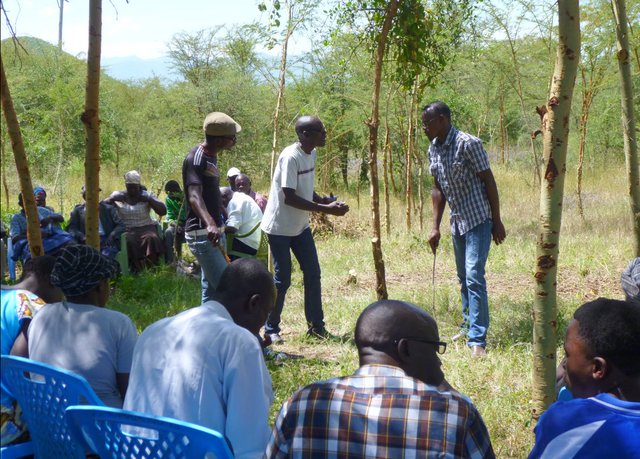
FMNR implementation approach [Кения]
After consultations with local stakeholders, experts (from NEMA, ICRAF, KFS, Wildlife Kenya) and Homabay County Government representatives the FMNR approach is being introduced by World Vision through a public funded project. The aim of the approach is to promote FMNR and sustainable land and natural resource management through disseminating the …
- Составитель: Thomas Kalytta
2. Описание Технологии УЗП
2.1 Краткое описание Технологии
Определение Технологии:
Farmer Managed Natural Regeneration (FMNR) is a proven SLM Technology to restore degraded wasteland and improve depleted farmland. The farmer regu- lates and facilitates the re-growth of existing trees stumps, or self-sown seeds in the soil, and thus promotes soil fertility and through better ground cover, increases protection from runoff and erosion.
2.2 Подробное описание Технологии
Описание:
Conventional afforestation and tree planting requires considerable inputs, labour and care including suitable seedlings, transport of these, planting and regular watering - and the survival rate in arid and semi-arid climates is often very poor. On the other hand Farmer Managed Natural Regeneration (FMNR) is a cheap and effective way to restore and improve large areas of degraded and depleted soils. The technology relies on the fact that even in deforested areas, soils often still maintain some active roots systems and viable seeds of native woody plants. Selectively promoted, leaving only a few main shoots, they can grow into trees within a few years. This technology - based on indigen- ous practices - has been successfully promoted by World Vision in eight African countries including Kenya and Ethiopia, and is now also being applied in Indonesia, East Timor and Latin America. Apart from labour and a farmer’s knife, and skills, there are no major inputs required. The farmers like this agroforestry technology a it is cheap and can be easily combined with other SLM technolo- gies such as permaculture, inter-cropping, and mulching. At the same time it can be used at various scales: on small plots of less than one hectare or up to the landscape level where whole hills can be re-vegetated within a short period. And the impact can be very positive on the soil, ecology, cli- mate and health of crops, people and livestock. The farmer can use prunings as rewood, and grow fodder below the trees; tree branches and leaves can serve for mulching and the owers for bees, fruits for consumption and sale. The trees break the winds, protect the soil and (with some species) their shade protects sensitive crops (e.g. vegetables or even coffee) from the sun. The soil’s water retention capacity, structure, biology and fertility improve. All effects contribute to soil, water and climate stabilization. One limitation can be the use of tractors and other machines which, however, are hardly employed by smallholder farmers. Some practical steps for establishing an FNMR site; 1) jointly agree on a target area (be it a eld or communal wasteland) 2) check out the area carefully for existence of woody species (trees, bushes, rootstocks) 3) mark the bushes or trees that should be nurtured into bigger trees (it is recommended to consult local/scientific knowledge on the trees species and their positive benefits) 4) protect the whole area (fences, hedges) or only the chosen trees against grazing and human disturbance 5) when the plants reach a height of 1 m start with pruning, only keeping the 2-3 main shoots, using the prunings for rewood or mulching 6) watering is in most cases not required as the indigenous trees have well-enough developed roots for self- supply 7) the specific cultivation and management practice depends on the trees species selected and the desired results (intercropping with maize, shade trees for coffee, fodder trees for livestock, flower trees for bees etc.) 8) fire and livestock are the are the main threats for a new FMNR site.
2.3 Фотографии, иллюстрирующие Технологию
Комментарии к фотографиям:
The photos were taken during 2 years while introducing FMNR to the 1000 small holder farmers in Homabay County.
2.4 Видеоматериалы, иллюстрирующие Технологию
Комментарий, краткое описание:
Tony Rinaudo gives an introduction to Farmer Managed Natural Regeneration Project Model. It is something that can be implemented relatively quickly with a low budget and have a great impact. FMNR has big implications for income generation, Disaster Risk Reduction, reducing proness to famine, conflict reduction, land and forest restoration, food security, climate change adaptation and mitigation... amongst other things.
https://vimeo.com/55277450
Дата:
2012
Место:
Niger etc.
Автор съемки:
World Vision
Комментарий, краткое описание:
(Video in German language)
It is a method with a great success: Farmer Managed Natural Regeneration (FMNR). World Vision employee Tony Rinaudo paves the way to grow trees, where hardly anything is produced. Meanwhile, the people in the Humbo region of Ethiopia are earning money from global emissions trade through greening their country. The World Bank is promoting the project and the local people can now provide for a better future. But in the beginning it was not easy for Tony Rinaudo and his colleagues to convince the farmers to protect the forest!
Es ist eine Methode, die durchschlagenden Erfolg hat: Farmer Managed Natural Regeneration (FMNR).
World Vision Mitarbeiter Tony Rinaudo lässt Bäume aufwachsen, wo das Land kaum noch etwas hervorbringt. Mittlerweile verdienen die Menschen in der Region Humbo in Äthiopien durch die Wiederbegrünung Geld im weltweiten Emissionshandel. Die Weltbank fördert das Projekt und die Menschen vor Ort können nun selbst für eine bessere Zukunft sorgen. Doch am Anfang war es nicht leicht für Tony Rinaudo und seine Mitstreiter, die Bauern davon zu überzeugen den Wald zu schützen!
https://vimeo.com/189822143
Дата:
26/06/2012
Место:
Humbo, Ethiopia
Автор съемки:
World Vision
Комментарий, краткое описание:
Original (edited) footage of a 1990 visit to Niger where Farmer Managed Natural Regeneration (FMNR) was being practiced. Features an interview with Tony Rinaudo and one of the early adopters. Tony was a SIM missionary who pioneered and developed this management practice. It is now being practiced on millions of hectares in Niger and other countries in the Sahel. Part 1: https://vimeo.com/189821376
Part 2: https://vimeo.com/189821948
Дата:
1990
Место:
Niger
Автор съемки:
Barry Rands
2.5 Страна/ регион/ места, где применяется Технология, информация о которых собрана в данной Анкете
Страна:
Кения
Административная единица (Район/Область):
Homa Bay Country
Более точная привязка места:
Suba and Mbita Sub-Counties
Охарактеризуйте пространственное распространение Технологии :
- равномерно-однородное применение на определенной площади
Если точная область неизвестна, укажите приблизительную площадь:
- 1-10 км2
Пояснения:
Only 16 of the initial FMNR sites are reflected above:
1,-0.55,34.215,1202,Sumba West ,Lambwe,Abong'o agroforestry farm,Mon Sep 01 00:00:00 UTC 2014,Yes,Borehole 4,Bucket or watering can,1,0,1,"Agroforestry management,soil testing and +fmnr",4
2,-0.546,34.209,1223,Sumba west ,Lambwe,Abuto's +fmnr,Fri Aug 01 00:00:00 UTC 2014,Yes,Borehole,N/A,1,0,1,+fmnr farm,,https://wvksurveys.appspot.com/view/binaryData?blobKey=WVK_Livelihoods_2014%5B%40version%3Dnull+and+%40uiVersion%3Dnull%5D%2FWVK_Livelihoods_2014%5B%40key%3Duuid%3A7afa8c53-61f2-46ff-a191-9ebd393b0145%5D%2Fimage_test
4,-0.617,34.333,1171,Ogongo ,Lambwe,Aloice +fmnr demonstration farm,Sat Sep 13 00:00:00 UTC 1997,Yes,"Borehole, Rainwater, lake and Others",N/A,1,0,1,+fmnr Demonstration farm.,3
5,-0.621,34.331,1154,Ogongo ,Lambwe,Arise and Shine Ojawa YG,Wed Jan 01 00:00:00 UTC 2014,Yes,Pond,Bucket or watering can,11,5,6,"Tree nursery, tree planting, +fmnr, bee keeping, maize farming 4acres, Agro forestry, chairs for hire, fruit trees.",10
6,-0.612,34.337,1191,Ogongo ,Lambwe,Clements +fmnr site,Tue Aug 13 00:00:00 UTC 2013,Yes,"Rainwater, lake and Others",N/A,2,1,1,+fmnr established site,1 acre,https://wvksurveys.appspot.com/view/binaryData?blobKey=WVK_Livelihoods_2014%5B%40version%3Dnull+and+%40uiVersion%3Dnull%5D%2FWVK_Livelihoods_2014%5B%40key%3Duuid%3Af68584de-5b53-465a-9177-01159ef0ff3f%5D%2Fimage_test
7,-0.541,34.392,1163,Ruri East,Lambwe,Eliakims +fmnr site,Sun Jun 01 00:00:00 UTC 2014,Yes,Borehole,N/A,1,1,1,Household +fmnr site and bee keeping.,2 acres,https://wvksurveys.appspot.com/view/binaryData?blobKey=WVK_Livelihoods_2014%5B%40version%3Dnull+and+%40uiVersion%3Dnull%5D%2FWVK_Livelihoods_2014%5B%40key%3Duuid%3A825648e7-1fa4-4be8-b051-83adc8748e0b%5D%2Fimage_test
10,-0.562,34.324,1204,Got jope ,Lambwe,Got Jope +fmnr Biodiversity site,Wed Aug 13 00:00:00 UTC 2014,Yes,"Rainwater, lake and Others",N/A,0,,,+fmnr site fenced off for natural re generation,2
11,-0.535,34.406,1172,Got Rabondo,Lambwe,Gotrabondo +fmnr,Tue Jan 13 00:00:00 UTC 2015,Yes,"Rainwater, lake and Others",N/A,,,,Proposed +fmnr site,0.5 acres,https://wvksurveys.appspot.com/view/binaryData?blobKey=WVK_Livelihoods_2014%5B%40version%3Dnull+and+%40uiVersion%3Dnull%5D%2FWVK_Livelihoods_2014%5B%40key%3Duuid%3A544ec602-66ad-4e15-9053-1471c78f53ad%5D%2Fimage_test
19,-0.576,34.368,1243,Godjope,Lambwe,Ngufu youth group,Tue Jan 06 00:00:00 UTC 1998,Yes,Open well,Bucket or watering can,7000,4500,2500,+fmnr site,6Average of 2.5acres per household,https://wvksurveys.appspot.com/view/binaryData?blobKey=WVK_Livelihoods_2014%5B%40version%3Dnull+and+%40uiVersion%3Dnull%5D%2FWVK_Livelihoods_2014%5B%40key%3Duuid%3Ae64b2ac5-0beb-4780-aa51-595c3a31d3c7%5D%2Fimage_test
22,-0.6,34.25,1336,Nyandenda ,Lambwe,Nyakia CBO,Tue Jan 03 00:00:00 UTC 2012,Yes,Open well,Bucket or watering can,35,15,20,"Bee keeping, +fmnr, Agro forestry",0.5 acres,https://wvksurveys.appspot.com/view/binaryData?blobKey=WVK_Livelihoods_2014%5B%40version%3Dnull+and+%40uiVersion%3Dnull%5D%2FWVK_Livelihoods_2014%5B%40key%3Duuid%3A792b57df-7a7f-4e43-9643-8d801e3b39be%5D%2Fimage_test
26,-0.546,34.343,1234,God jope ,Lambwe,Obanda environmental group,Tue Jul 01 00:00:00 UTC 2014,Yes,"Rainwater, lake and Others",Bucket or watering can,7,2,5,"+fmnr , tree nursery and soil and water conservation",20 acres,https://wvksurveys.appspot.com/view/binaryData?blobKey=WVK_Livelihoods_2014%5B%40version%3Dnull+and+%40uiVersion%3Dnull%5D%2FWVK_Livelihoods_2014%5B%40key%3Duuid%3A73b33675-a5be-4579-b31a-51ec366c6c6f%5D%2Fimage_test
28,-0.599,34.335,1175,Ogongo ,Lambwe,Ogando youth group,Sat Oct 13 00:00:00 UTC 2012,Yes,Pond,Bucket or watering can,19,6,13,"Tree nursery, kitchen vegetable gardening, tree planting, agroforestry, proposed green house farming, proceeds from tree nursery support livestock purchase, fruit tree I.e grafted mangoes, +fmnr",4 acres,https://wvksurveys.appspot.com/view/binaryData?blobKey=WVK_Livelihoods_2014%5B%40version%3Dnull+and+%40uiVersion%3Dnull%5D%2FWVK_Livelihoods_2014%5B%40key%3Duuid%3A70cf4828-4a0d-4ae5-a122-ce3654cb8242%5D%2Fimage_test
32,-0.528,34.172,1122,Sindo ,Lambwe,Osumbas +fmnr farm,Wed Jul 02 00:00:00 UTC 2014,Yes,"Rainwater, lake and Others",N/A,,,,+fmnr farm ,3 acres,https://wvksurveys.appspot.com/view/binaryData?blobKey=WVK_Livelihoods_2014%5B%40version%3Dnull+and+%40uiVersion%3Dnull%5D%2FWVK_Livelihoods_2014%5B%40key%3Duuid%3Ac8c7fa0c-80a6-4790-bddc-d4ac003bc4ba%5D%2Fimage_test
34,-0.547,34.169,1136,Rang'wa East ,Lambwe,Samuel obado Demonstration farm,Wed May 14 00:00:00 UTC 2014,Yes,"Rainwater, lake and Others",Bucket or watering can,1,0,1,+fmnr Demonstration farm.,3
37,-0.623,34.25,1213,Nyandenda ,Lambwe,Violet simba-individual,Tue Jan 03 00:00:00 UTC 2012,Yes,Open well,Bucket or watering can,1,1,0,"+fmnr Agro forestry, fruit trees, bee keeping, tree nursery",3
Map
×2.6 Сколько лет применяется данная Технология
Год начала реализации:
2014
Если год начала применения Технологии достоверно неизвестен, дайте примерную оценку:
- менее 10 лет назад (недавняя)
2.7 Внедрение Технологии
Укажите, как именно Технология УЗП была внедрена:
- через проекты/ внешнее вмешательство
Пояснения (тип проекта и т.д.):
The technology was introduced by World Vision through a public funded project on climate protection and natural resource management. It received the “Total Kenya Eco Challenge Award” in 2016. The introduction was done through the following steps. The project staff were trained on the concept after which they trained Government staff in forestry, education and agriculture department including chiefs and assistant chief who were to turn out to be the entry point/ ambassadors for the concept. Intense trainings, awareness campaigns, practical demonstrations, consultative meetings and observations were conducted. Till now more than 300 hectares of degraded land was reclaimed through FMNR and over 1000 farmers adopted the practice already.
3. Классификация Технологии УЗП
3.1 Основные цели и задачи реализации Технологии
- повышение производства
- снижение или предотвращение деградации земель, восстановление нарушенных земель
- сохранение экосистем
- защита бассейнов рек (приводораздельной части/ нижнего течения) – в сочетании с другими Технологиями
- сохранение/ повышение биоразнообразия
- снижение риска стихийных бедствий
- адаптация к изменению климата / экстремальным погодным явлениям и их последствиям
- смягчение последствий изменения климата
- создание благоприятных экономических условий
- this technology brings a lot of positive effects on the environment (more water, more carbon and nutrients in the soil, better micro climate etc.) > bullet point 4: other technologies could be contour farming, agroforestry, water harvesting)
3.2 Текущий(-ие) тип(-ы) землепользования на территории, где применяется Технология
Комбинированное землепользование в пределах одной и той же земельной единицы:
Да
Укажите сочетания типов землепользования (посевы / пастбища / деревья):
- Агролесоводство

Пахотные угодья и плантации
- Однолетние культуры
- Древесные и кустарниковые культуры
Ежегодный урожай - Уточните культуры:
- зерновые культуры - кукуруза
- зерновые культуры - просо
- зерновые культуры - киноа или амарант
- зерновые культуры - сорго
- бобовые - бобы
- овощи - другие
- coffee, passion fruit
Число урожаев за год:
- 1
Поясните:
There is no planting required but protection of FMNR plots. The shrubs grow best in the rainy season.

Леса/ лесистая местность
Вид деревьев:
- Виды Акации
Продукции и услуги:
- Дрова
- Плоды и орехи
- Другие продукты леса
- Выпас/ ощипывание молодых побегов и листьев
- Bee pasture

Непродуктивные земли
Поясните:
degraded wasteland
Замечания:
Many of the typical hills and areas in Suba Sub-County are degraded and without forest anymore. Over exploitation through grazing and charcoal burning led to deforestation and soil degradation. Most of the water streams have disappeared in the meantime. The climate has become more harsh and arid. The native trees grown through FMNR provide shade, organic matter, fruits, fodder, fire wood, bee pasture etc.
Пояснения:
Main products/ services: The native trees provide shade, organic matter, fruits, fodder, firewood, bee pasture etc.
Typical crops in Kenya grown below the FMNR trees are maize, millet, mung beans, amaranth and sorghum, vegetables and coffee. It can be an advantage to promote the growth of Leguminous trees as they serve as source of nitrogen and many of them produce pods eaten by livestock.
Livestock density: Livestock is one of the main threats to the technology. It is a very important to keep livestock out of the FMNR areas either by using live fences or mesh wire fences.
3.4 Водоснабжение
Обеспеченность водой участков, где реализуется Технология :
- богарные земли
Пояснения:
Since only indigenous species are promoted the normal rainfall should be sufficient for their growth.
3.5 Категория УЗП, к которой относится Технология
- лесное хозяйство в естественных и измененных лесах
- агролесоводство
- Улучшение почвенного/ растительного покрова
3.6 Мероприятия УЗП, выполняемые в рамках Технологии

Мероприятия с использованием растительности
- Р1: Древесный и кустарниковый покров
Пояснения:
There is also an aspect of management change (M2): allowing the native trees to grow, pruning of upcoming bushes, mulching with tree branches, felling of trees when desired etc.
3.7 Основные проблемы деградации земель, на решение которых направлена Технология

водная эрозия почв
- ВЭп: поверхностная эрозия/смыв верхних почвенных горизонтов
- ВЭл: овражная эрозия / оврагообразование

ветровая эрозия почв
- Эп: утрата плодородного слоя почвы

биологическая деградация
- Бр: сокращение растительного покрова
- Бк: сокращение количества биомассы
- Бв: потеря природного разнообразия
Пояснения:
FMNR contributes to less soil erosion, more organic matter and more diversified habitats (leading to increased agro-biodiversity).
3.8 Предотвращение и снижение деградации земель, или восстановление нарушенных земель
Укажите цель Технологии по отношению к деградации земель :
- снижение деградации земель
- восстановление/ реабилитация нарушенных земель
Пояснения:
FMNR contributes to less land degradation and is an ideal technology to restore severely degraded areas.
4. Технические характеристики, мероприятия по практической реализации, вложения и стоимость
4.1 Технический рисунок, иллюстрирующий Технологию
Спецификация (пояснения к техническому рисунку):
The technical drawing above shows four typical stages of an indiginous tree in a FMNR site:
1) a suppressed shrub, very damaged by roaming animals or human interference
2) if this small shrub experience protection it will regenerate and grow many new branches
3) as soon as a bush has reached a height of 1 m the farmer can start with pruning keeping only a few major branches. This will help the tree to grow high and the farmer can yield branches and leaves for fire wood and mulching. Depending on the growth rate, pruning can be done 1-2 times a year.
4) A mature tree produces also fruits that can be harvested. As only major branches remain enough sunlight will reach the ground to allow the cultivation of crops or gras production.
Slope and spacing can varry a lot (from 5 to 50 m distance) as FMNR is designed to be extremely flexible, giving farmers considerable freedom of individual choice on how to meet their own specific needs, using the free materials at hand (species mix), responding to the specific climate, soils, crop mix, and their own understanding, at the time of implementation. FMNR is being introduced into many different contexts where the environment and species mix, the specific land use (crop land, pasture or forest) and farmer needs, vary from region to region and even from farm to farm.
To date, FMNR has been successfully practiced in a variety of locally adapted ways such as:
- By individual farmers on their own land
- By communities on communal lands and in degraded forests
- By leaving very few trees (10 - 20 / ha), or by leaving very many (150 trees/ ha).
- By focusing on tree species predominantly used to provide firewood and building poles, or on species that have nutritious leaves that feed families or animals. Some use trees that fix nitrogen and can therefore increase the soil fertility for crops.
- Leaving a single stem to grow from a stump (and harvesting when larger), or by leaving multiple stems,
successively harvesting one each year.
- Allowing a single stem to grow into a permanent tree, and then harvesting 1/2 to 1/3rd of the branches per
year (such as pollarding). Pollarding provides larger wood harvests and more rapid re-growth.
- Allowing tree re-growth only on farm borders. The trees are allowed to grow close to each other and are
pruned high up the trunk. As need arises whole trees are harvested and re-growth is allowed to replace
the tree that was harvested.
- Leaving only trees, which are growing approximately in straight lines and moving self-sown seedlings and replanting them within these lines. Within the rows the trees are grown as bushes which are slashed to ground level during the rainy season, except for single stems that are allowed to grow about every 12 meters. This is done to avoid interference with ploughing and because soil infertility is a major issue, addressed by mulching with pruned branches.
Автор:
Thomas Kalytta
Дата:
12/10/2016
4.2 Общая информация по необходимым вложениям и стоимости
Уточните, как рассчитывались затраты и вложения:
- на площадь, где применяется Технология
Укажите размер и единицу площади:
1
Если вы используете местные системы измерения, укажите коэффициент пересчета на один гектар (например, 1 га = 2,47 акров): 1 га =:
ha
другая/ национальная валюта (название):
KES
Если это необходимо, укажите обменный курс от доллара США к местной валюте (например, 1 доллар США = 79,9 бразильского реала): 1 доллар США =:
100,0
Укажите среднюю дневную заработную плату наемных работников:
400 Kenyan Shillings
4.3 Мероприятия, необходимые для начала реализации
| Деятельность | Время (сессия) | |
|---|---|---|
| 1. | Plot inspection (to identify and mark potential bushes) | ideally after harvesting the crops, best time for transects |
| 2. | Plot protection (fencing against livestock) | ideally after harvesting, best time for transects, before planting |
| 3. | alternatively: Protection measures of single bushes | ideally after harvesting, best time for transects, before planting |
| 4. | Weeding/ clearance of surplus bushes/ vegetation | all year, during vegetation period |
| 5. | normal farming activities within the FMNR site | after harvesting the crops |
| 6. | Integrating beekeeping and or fodder harvesting | all year, during vegetative period |
| 7. | Thinning or harvesting of fuel wood | As per need, dependant on the farmer, all year round |
Пояснения:
Ideally, FMNR activities are not interfering too much with the normal farming activities except for mulching or compost making wherefore small tree branches can be used.
4.4 Вложения и затраты, необходимые для начала реализации
| Опишите затраты | Единица | Количество | Затраты на единицу | Общая стоимость на единицу | % затрат, оплаченных землепользователями | |
|---|---|---|---|---|---|---|
| Оплата труда | plot protection - fencing/ ha | person-days | 30,0 | 400,0 | 12000,0 | 100,0 |
| Оплата труда | tree protection - first pruning/ ha | person-days | 10,0 | 400,0 | 4000,0 | 100,0 |
| Оборудование | farmer's knife | piece | 2,0 | 150,0 | 300,0 | 100,0 |
| Оборудование | machete | piece | 2,0 | 500,0 | 1000,0 | 100,0 |
| Оборудование | rake | piece | 2,0 | 500,0 | 1000,0 | 100,0 |
| Оборудование | hand hoe | piece | 2,0 | 450,0 | 900,0 | 100,0 |
| Оборудование | leather gloves | pair | 2,0 | 1000,0 | 2000,0 | 100,0 |
| Оборудование | strong gumboots | pair | 2,0 | 2000,0 | 4000,0 | 100,0 |
| Оборудование | axe | piece | 2,0 | 700,0 | 1400,0 | 100,0 |
| Посадочный материал | life fence seeds/ thorns of shrubs / ha | seedlings | 1200,0 | 5,0 | 6000,0 | 100,0 |
| Удобрения и ядохимикаты | n/a | |||||
| Строительные материалы | n/a | |||||
| Другие | n/a | |||||
| Общая стоимость запуска Технологии | 32600,0 | |||||
| Общие затраты на создание Технологии в долларах США | 326,0 | |||||
Если Вы не можете указать расходы в приведенной выше таблице постатейно, дайте оценку общих затрат на создание Технологии:
32600,0
Если землепользователем оплачено менее 100% затрат, укажите, кем покрывались остальные затраты:
The farmer harvest wood and non-wood products like honey and grass. Often FMNR is combined with agriculture or animal husbandry. As the crop yield increases the farmer can invest in more equipment and tools.
Пояснения:
Some of the costs incurred were covered by WV during inception of the project model of FMNR especially for the demonstration plots but the costs on household level are covered by the farmers themselves. Normal farm equipment is being used to establish the sites. The farmer needs some gloves und gumboots and the time for the additional works. Also some time is needed to be invested for training to get equipped with the required knowledge and skills. Live fence plants or throns from shrubs are normally collected/ taken from the pruned Acacia branches.
4.5 Поддержание/ текущее обслуживание
| Деятельность | Сроки/ повторяемость проведения | |
|---|---|---|
| 1. | Pruning of target bushes and trees | during vegetation period, ideally in the dry season |
| 2. | tree felling | after vegetation period, after harvesting the crops |
| 3. | Harvesting of grass in FMNR sites not on crops | During and after rainny season |
Пояснения:
Ideally, FMNR activities are not interfering too much with the normal farming activities except for mulching or compost making wherefore small tree branches can be used for firewood. In places where FMNR is applied to gain timber, branches and firewood in a sustainable way, it has supported to raise more income for households allowing them to meet their basic needs including school fees, medical bills etc.
4.6 Стоимость поддержания/ текущего обслуживания ( в год)
| Опишите затраты | Единица | Количество | Затраты на единицу | Общая стоимость на единицу | % затрат, оплаченных землепользователями | |
|---|---|---|---|---|---|---|
| Оплата труда | Yearly Pruning of target bushes and trees /ha | person-days | 6,0 | 400,0 | 2400,0 | 100,0 |
| Оплата труда | tree felling of selected trees/ ha | person-days | 4,0 | 400,0 | 1600,0 | 100,0 |
| Оборудование | farmer's knife | piece | 2,0 | 150,0 | 300,0 | 100,0 |
| Оборудование | machete | piece | 2,0 | 500,0 | 1000,0 | 100,0 |
| Оборудование | rake | piece | 2,0 | 500,0 | 1000,0 | 100,0 |
| Оборудование | hand hoe | piece | 2,0 | 450,0 | 900,0 | 100,0 |
| Общая стоимость поддержания Технологии | 7200,0 | |||||
| Общие затраты на поддержание Технологии в долларах США | 72,0 | |||||
Если Вы не можете указать расходы в приведенной выше таблице постатейно, дайте оценку общих затрат на поддержание Технологии:
14600,0
Если землепользователем оплачено менее 100% затрат, укажите, кем покрывались остальные затраты:
The farmer harvest wood and non-wood products like honey and grass. Often FMNR is combined with agriculture or animal husbandry. As the crop yield increases the farmer can invest in more equipment and tools.
Пояснения:
Some of the costs incurred were covered by WV during inception of the project model of FMNR especially for the demonstration plots but the costs on household level are covered by the farmers themselves. Normal farm equipment is being used to establish the sites. The farmer needs some gloves und gumboots and the time for the additional works. Also some time is needed to be invested for training to get equipped with the required knowledge and skills. Live fence plants or throns from shrubs are normally collected/ taken from the pruned Acacia branches.
4.7 Наиболее значимые факторы, влияющие на стоимость затрат
Опишите наиболее значимые факторы, влияющие на стоимость затрат:
Size of the FMNR site and the density and age of trees. Important precondition is fencing off the sites/ protection of trees against livestock. Most of the equipment needed is part of the normal agricultural tool set.
5. Природные и социально-экономические условия
5.1 Климат
Среднегодовое количество осадков
- < 250 мм
- 251-500 мм
- 501-750 мм
- 751-1000 мм
- 1001-1500 мм
- 1501-2000 мм
- 2001-3000 мм
- 3001-4000 мм
- > 4000 мм
Укажите среднегодовое количество осадков (если известно), мм:
1350,00
Пояснения/ комментарии по осадкам:
The precipitation varies a lot within the area/ county.
Daily maximum temperatures range between 26°C during the coldest months (April and November) and 34°C during the hottest months (January to March).
Укажите название соответствующей метеостанции:
Homa Bay, Homabay Airport, NY, Kenya (lat -0.6000°, long 34.4670°, altitude 1305 metres)
Агроклиматическая зона
- полузасушливая
Rainfall is distributed over two rainy seasons: April-May (long rains) and September to November (short rains).
5.2 Рельеф
Склоны (преобладающие):
- пологие (0-2%)
- покатые (3-5%)
- покато-крутые (6-10%)
- крутые (11-15%)
- очень крутые (16-30%)
- чрезвычайно крутые (31-60%)
- обрывистые (>60%)
Формы рельефа:
- плато/ равнины
- гребни хребтов/холмов
- склоны гор
- склоны холмов
- подножья
- днища долин
Зона высотной поясности:
- 0-100 м над уровнем моря
- 101-500 м н.у.м.
- 501-1000 м н.у.м.
- 1001-1500 м н.у.м.
- 1501-2000 м н.у.м.
- 2001-2500 м н.у.м.
- 2501-3000 м н.у.м.
- 3001-4000 м н.у.м.
- > 4 тыс. м н.у.м.
Укажите, приурочено ли применение Технологии к специфическим условиям:
- не имеет значения
5.3 Почвы
Средняя мощность почв:
- поверхностные (0-20 см)
- неглубокие (21-50 см)
- умеренно глубокие (51-80 см)
- глубокие (81-120 см)
- очень глубокие (> 120 см)
Гранулометрический состав (верхнего горизонта):
- средние фракции (суглинистый, супесчаный)
Гранулометрический состав (на глубине более 20 см):
- грубый крупнозернистый/ лёгкий (песчаный)
Содержание органического вещества в верхнем горизонте:
- среднее (1-3%)
Если возможно, приложите полное описание почв или укажите доступную информацию, например тип почв, рH/ кислотность почв, ёмкость катионного обмена, содержание азота, содержание солей и т.д.
The data above was provided by Divisional Agriculture officer in Lambwe.
5.4 Доступность и качество воды
Уровень грунтовых вод:
5-50 м
Доступность поверхностных вод:
недостаточны/ отсутствуют
Качество воды (без обработки):
питьевая вода плохого качества (необходима обработка)
Является ли солёность воды проблемой?
Да
Поясните:
High amounts of sodium ions makes the water often saline.
Происходят ли периодические затопления территории?
Да
Регулярность:
часто
Комментарии и дополнительная информация по качеству и количеству воды:
The water quality of surface water is poor and sometimes only suitable for livestock. Though due to few safe water sources, the households often have to use the surface run off for domestic use.
5.5 Биоразнообразие
Видовое разнообразие:
- средняя
Разнообразие местообитаний:
- средняя
Комментарии и дополнительная информация по биоразнообразию:
The biodiversity is still higher than expected in comparison to the degree of degradation of the landscape. This might relate to the proximity of the Lake Victoria with its rich fish- and avifauna and Ruma National Park.
5.6 Характеристика землепользователей, применяющих Технологию
Рыночная ориентация производства:
- смешанный (натуральный / коммерческий)
Доходы из других источников:
- 10-50% всех доходов
Относительный уровень достатка:
- плохой
Индивидуальное или коллективное хозяйство:
- частное/ домовладение
Уровень механизации:
- ручной труд
- тягловая сила
Пол:
- женщины
- мужчины
Возраст землепользователей:
- молодёжь
- средний возраст
Укажите другие важные характеристики землепользователей:
All the above groups participate in the roll-out of the technology. It is relatively new and many are excited about the benefits. Elderly and children (youth and child headed households) need more time do the same work and adopt the technology less enthusiastically. Though Elderly are often key drivers of the technology as they best understand the degree of deforestation and water insecurity and the interlinkages.
5.7 Средняя площадь земель, используемых землепользователями с применением Технологии
- < 0,5 га
- 0,5-1 га
- 1-2 га
- 2-5 га
- 5-15 га
- 15-50 га
- 50-100 га
- 100-500 га
- 500-1000 га
- 1000-10000 га
- > 10000 га
Считается ли это мелким, средним или крупным хозяйством (по местным масштабам)?
- мелкое
5.8 Собственность на землю, права на земле- и водопользование
Землевладелец:
- общинная/ поселковая
- индивидуальная, оформленная в собственность
Право землепользования:
- общинное (контролируемое)
- индивидуальное
Право водопользования:
- общинное (контролируемое)
- индивидуальное
5.9 Доступ к базовым услугам и инфраструктуре
медицинское обслуживание:
- плохой
- средний
- хорошая
образование:
- плохой
- средний
- хорошая
технические консультации:
- плохой
- средний
- хорошая
занятость (вне хозяйства):
- плохой
- средний
- хорошая
рынки:
- плохой
- средний
- хорошая
электроснабжение:
- плохой
- средний
- хорошая
транспорт и дорожная сеть:
- плохой
- средний
- хорошая
водоснабжение и канализация:
- плохой
- средний
- хорошая
финансовые услуги:
- плохой
- средний
- хорошая
child protection:
- плохой
- средний
- хорошая
6. Воздействия и заключительные положения
6.1 Влияние Технологии УЗП в пределах территории ее применения
Социально-экономическое воздействие
Продуктивность
производство сельскозяйственных культур
Количество до применения УЗП :
5 bags of maize / acre
Количество после применения УЗП:
up to 8 bags of maize / acre
производство кормов
Количество до применения УЗП :
Less than 10 bags (90kg) of harvested grass / acre
Количество после применения УЗП:
More than 20 bags (90kg) harvested grass / acre
Комментарий/ пояснения:
This applies to 1 acres piece of land that was not managed on FMNR compared to same size on good management FMNR and better quality fodder.
производство древесины
Комментарий/ пояснения:
More wood is obtained from FMNR site because biomass increases faster and new ones regenerate faster. Before SLM, tree growth was suppressed.
продуктивность недревесных продуктов леса
Количество до применения УЗП :
0 beehive
Количество после применения УЗП:
10 Hives /acre
Комментарий/ пояснения:
Beehive for honey production could be introduced as more vegetation and flowers are now available. Medicinal plants are also gaining in importance.
управление землями
Количество до применения УЗП :
Poor
Количество после применения УЗП:
better
Комментарий/ пояснения:
It was not easy to manage the land before FMNR application. After the SLM technology was adopted the farmers find it less hard to work their farms besides the land value also went up.
Доступность и качество воды
доступность оросительных вод
Комментарий/ пояснения:
Since FMNR improves the soil cover, less erosion and siltation take place in the community dams; hence more water available. Equally, those who harness surface runoff are able to get water for micro irrigation within their homesteads.
Доходы и затраты
доходы хозяйства
Количество до применения УЗП :
Low
Количество после применения УЗП:
Medium
Комментарий/ пояснения:
FMNR has provided additional/ alternative sources of income to the beneficiaries. Sale from wood, honey, medicinal components and non-wood products etc. This has led to a diversification of income sources.
объем работ
Комментарий/ пояснения:
The workload has increased slightly, depending on the density of FMNR trees on farm. The work is, however, more divers.
Социальное и культурное воздействие
продовольственная безопасность/ самообеспечение
Комментарий/ пояснения:
The more diversified livelihoods reduce the risk of food insecurity. The impact of disasters will reduced and the self-sufficiency has increased.
возможности отдыха и рекреации
Комментарий/ пояснения:
Some of the farmers established recreation sites as the microclimate improved and the beauty of the sites, more animals can be seen including birds and butterflies but at the same time also dangerous snakes appear. Some sacred sites have also been safeguarded.
знания в области УЗП/ деградации земель
Комментарий/ пояснения:
Areas with deep gullies before FMNR application could be restored. Clear evidence that the technology has a high potential to rehabilitate degraded ecosystems.
Экологическое воздействие
Почвы
влажность почв
Комментарий/ пояснения:
Notable improvement. It has been proved that growing conditions and availability of water for crops under suitable trees can be much higher if the tree density is not too high.
почвенный покров
Комментарий/ пояснения:
The addtional vegetation provides protection of the soil against water and wind erosion.
почвенное / подземное органическое вещество/ углерод
Комментарий/ пояснения:
Higher organic matter can be found on FMNR sites.
Биоразнообразие: растительность, животный мир
Растительный покров
Комментарий/ пояснения:
A biodiversity studies shows already after 3 sampling periods that more species are found on FMNR / restored sites.
разнообразие флоры
Комментарий/ пояснения:
Increase in population and density of indigenous tree species also as a starting point for management change towards agroforestry.
разнообразие фауны
Комментарий/ пояснения:
Many animal species find safe habitats in new FMNR sites.
полезные виды
Комментарий/ пояснения:
Birds, butterflies, wild bees, spiders etc. - they control the pests and pollinate the crops.
разнообразие местообитаний
Комментарий/ пояснения:
Compared to degraded sites the FMNR sites provide more habitats e.g. in the trees or soil.
борьба с вредителями/ болезнями
Комментарий/ пояснения:
Still not yet proven but the expectation is that pests will be less harmful as the coping mechanism of the agro-ecological systems is better due to more predators (spiders, birds, frogs etc.)
Климат и снижение риска стихийных бедствий
последствия наводнений
Комментарий/ пояснения:
FMNR serves also to mitigate the impact of annual floods to the crops and settlements.
влияние засух
Комментарий/ пояснения:
FMNR improves the micro-climate and soil moisture. The technology therefore mitigates the impact of droughts.
выбросы углекислого газа и парниковых газов
Комментарий/ пояснения:
Increase of tree cover through aforestation or FMNR as one of the ways to sequester carbon in biomass.
риск пожаров
Комментарий/ пояснения:
Tree cover can increase the risk of major wild fires. Fire breaks should be considered for larger FMNR sites.
скорость ветра
Комментарий/ пояснения:
The trees of FMNR serve as wind break and protect houses, greenhouses, and crop fields against heavy winds.
микроклимат
Комментарий/ пояснения:
The micro-climate and humidity improves due to more vegatation and evaporation.
6.2 Влияние Технологии за пределами территории ее применения
доступность воды
Комментарий/ пояснения:
Increase in water retention which increases the ground water levels.
отложение наносов ниже по течению
Комментарий/ пояснения:
Due to less wind and water erosion the siltation of ponds and water pans is reduced.
буферная/ фильтрационная способность
Комментарий/ пояснения:
Vegetation cover allows for good filtration and reduces the immediate surface water run off which can lead to flooding.
воздействие парниковых газов
Комментарий/ пояснения:
The additional tree cover acts as carbon sink and mitigation measure to global warming.
Укажите оценку внешних воздействий (измерений) :
Detailed research has not been carried out on the impact of the technology to provide scientific evidence. However, soil testing is being done and a study on the biodiversity is being conducted.
6.3 Подверженность и чувствительность Технологии УЗП к постепенным изменениям климата и экстремальным погодным явлениям/ стихийным бедствиям, связанным с изменением климата (в понимании землепользователей)
Постепенное изменение климата
Постепенное изменение климата
| Сезон | увеличение или уменьшение | Насколько успешно Технология справляется с этим? | |
|---|---|---|---|
| другие постепенные изменения климата | micro climate (moisture, less wind & erosion, reduced temperature) | увеличилось | очень хорошо |
Экстремальные явления, связанные с изменением климата (стихийные бедствия)
Стихийные бедствия климатического характера
| Насколько успешно Технология справляется с этим? | |
|---|---|
| засухи | хорошо |
| лесные пожары | плохо |
| другие природные пожары | плохо |
Гидрологические стихийные бедствия
| Насколько успешно Технология справляется с этим? | |
|---|---|
| паводки | умеренно |
Биологические стихийные бедствия
| Насколько успешно Технология справляется с этим? | |
|---|---|
| нашествия насекомых/ поражения червями | хорошо |
Пояснения:
A baseline survey captures also aspects of environmental degradation.
6.4 Анализ эффективности затрат
Насколько получаемый результат сопоставим с первоначальными вложениями (с точки зрения землепользователей)?
Эффективность затрат в краткосрочной перспективе:
позитивное
Эффективность затрат в долгосрочной перспективе:
позитивное
Насколько получаемый результат сопоставим с текущими расходами по поддержанию технологии (с точки зрения землепользователей)?
Эффективность затрат в краткосрочной перспективе:
слабо позитивное
Эффективность затрат в долгосрочной перспективе:
очень позитивное
Пояснения:
FMNR is a low cost technology and brings a good return on investment. Slightly more land is required and mechanisation can become more difficult. Farmers are very optimistic of the long- term results of FMNR since the need for wood is high. Locals have started looking at having trees on farm as an equal investment opportunity compared to crops.
6.5 Внедрение Технологии
- > 50%
Если возможно, дайте количественную характеристику (число домохозяйств и/или площадь применения):
Over 1000 households reached through training and confirmed practising.
Среди применяющих Технологию землепользователей, какова доля лиц, применяющих её по собственной инициативе, т.е. без какого-либо материального стимулирования со стороны?
- 91-100%
Пояснения:
Most of the adopters start the practice after getting basic training and some of them just through observation of model sites.
6.6 Адаптация
Была ли Технология УЗП изменена в недавнее время с целью адаптации к меняющимся условиям среды?
Нет
6.7 Сильные стороны/ преимущества/ возможности Технологии
| Сильные стороны/ преимущества/ возможности по мнению землепользователей |
|---|
| FMNR is appropriate for both male and female of productive ages though at the introduction depending on nature and size of the farm, men are more advantaged due to labour intensive. However for land with no trees just starting up, it can be easily managed by both sexes. It is also a form of exercise for the aging people thus improving on healthy lifestyle. |
| Сильные стороны/ преимущества/ возможности по мнению составителя или других ключевых специалистов |
|---|
| FMNR can be done by anyone/everyone in a household as long as the drive and understanding of the concept is embraced. This includes people with special needs. It is cheap, efficient and refreshing plus satisfying since results are evident in short while. Tree planting survival rate has been low in the recent times following unreliable rainfall, external threats e.g livestock, pests and diseases thus FMNR is the solution to restoring the degraded ecosystems. Women may find the actual management difficult at some stage but since the concept brings income, even external labor is sourced. So the women don't fear getting on with the technology. |
| FMNR is a low cost technology and brings a good return on investment. Farmers are very optimistic of the long- term results of FMNR since the need for wood is high. Locals have started looking at having trees on farm as an equal investment opportunity compared to crops. |
6.8 Слабые стороны/ недостатки/ риски Технологии и пути их преодоления
| Слабые стороны/ недостатки/ риски по мнению землепользователей | Возможные пути их преодоления/снижения? |
|---|---|
| Safety of the farmers during management (thick thorny bushes) and habitat it creates for wild life that could be threats to man e.g snakes, monkeys eat all their crops as birds feed on the seeds too. | Monkeys can be kept out by thorney hedges, birds by mirrors and cats. |
| Slightly more land is required and mechanisation can become more difficult. | Mechanisation can be done if new trees build kind of hedges. |
| Слабые стороны/ недостатки/ риски по мнению составителя или ответственных специалистов | Возможные пути их преодоления/снижения? |
|---|---|
| Women may find the actual management difficult at some stage and quite labour intensive. | Since the technology brings income even external labor can be sourced. |
7. Справочные материалы и ссылки
7.1 Методы сбора/ источники информации
- выезды на места, полевые обследования
3 field visits
- опросы землепользователей
2 interview
- опросы специалистов/экспертов по УЗП
2 Skype calls
- данные, собранные из отчетов и достоверных документов
4 reports
Когда были собраны данные (на местах)?
16/09/2016
7.2 Ссылки на опубликованные материалы
Название, автор, год публикации, ISBN:
Farmer-Managed Natural Regeneration Enhances Rural Livelihoods in Dryland West Africa, Weston, Peter, Reaksmey Hong, Carolyn Kaboré & Christian A. Kull, Environmental Management Volume 55, Issue 6, pp 1402–1417,2015, ISBN 0364-152X00267-015-0469-1
Где опубликовано? Стоимость?
Springer, USD 35
Название, автор, год публикации, ISBN:
Re-greening the Sahel: farmer-led innovation in Burkina Faso and Niger, Reij, C.; Tappan, G.; Smale, M., in Millions fed : proven successes in agricultural development, 2009, ISBN 9780896296619
Где опубликовано? Стоимость?
International Food Policy Research Institute, USD ?
7.3 Ссылки на соответствующую онлайн-информацию
Название/ описание:
Farmer Managed Natural Regeneration Hub
Адрес в сети Интернет:
http://fmnrhub.com.au/
Название/ описание:
Scaling up Regreening: Six steps to success, A practical approach to forest and Landscape Restoration, World Resources Institute, 2015, ISBN 978-1-56973-861-0
Адрес в сети Интернет:
https://www.wri.org/sites/default/files/scaling-regreening-six-steps-success.pdf
Название/ описание:
In Kenya, Farmer Managed Natural Regeneration is a remedy to Climate Change
Адрес в сети Интернет:
http://www.landscapes.org/kenya-farmer-managed-natural-regeneration-remedy-climate-change/
Название/ описание:
Australian High Commissioner Visits Environmental Restoration Project in Baringo County
Адрес в сети Интернет:
http://kenya.embassy.gov.au/nair/fmnr.html
Название/ описание:
ICRAF and World Vision facilitate Farmer Managed Natural Regeneration training in Uganda
Адрес в сети Интернет:
http://www.worldagroforestry.org/news/icraf-and-world-vision-wv-facilitate-farmer-managed-natural-regeneration-fmnr-training-uganda
Название/ описание:
Renew The Land - FMNR in Timor-Leste
Адрес в сети Интернет:
https://www.youtube.com/watch?v=ub2K8QGy8k0
Название/ описание:
FMNR at the International Permaculture Conference (Sept 2011) in Amman, Jordan
Адрес в сети Интернет:
https://www.youtube.com/watch?v=Dm_qlyvdZ_A
Название/ описание:
Proven successes in agricultural development: Increasing the Number of On-Farm Trees in Niger
Адрес в сети Интернет:
http://www.ifpri.org/publication/millions-fed
Название/ описание:
Afrikas Waldmacher (ZDF heute-journal vom 2.9.2016) German video
Адрес в сети Интернет:
https://www.youtube.com/watch?v=tgdcbxE-OQo
Название/ описание:
FMNR regreening projects in East Africa
Адрес в сети Интернет:
https://www.youtube.com/watch?v=ElfgcWCmops
Ссылки и модули
Развернуть все Свернуть всеСсылки

FMNR implementation approach [Кения]
After consultations with local stakeholders, experts (from NEMA, ICRAF, KFS, Wildlife Kenya) and Homabay County Government representatives the FMNR approach is being introduced by World Vision through a public funded project. The aim of the approach is to promote FMNR and sustainable land and natural resource management through disseminating the …
- Составитель: Thomas Kalytta
Модули
Нет модулей


